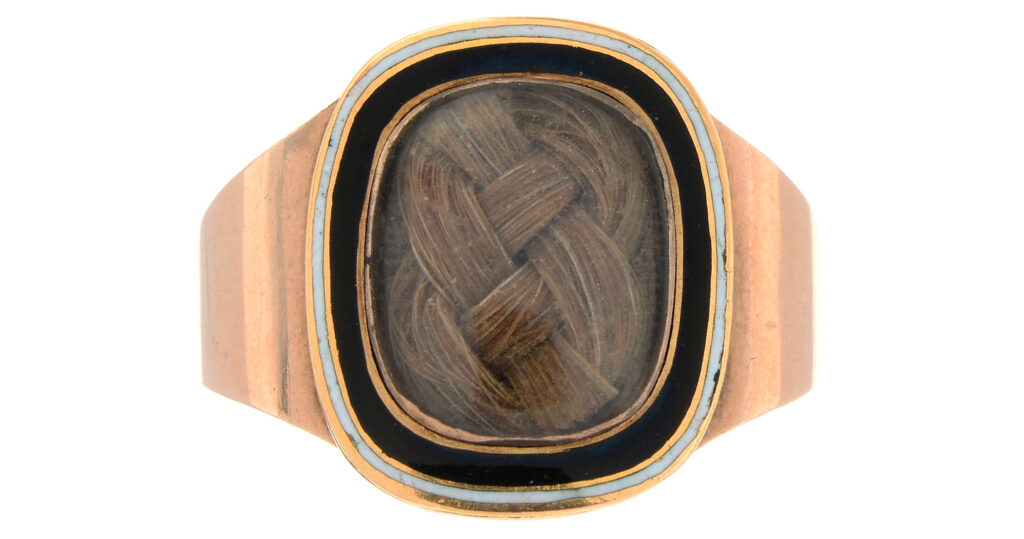1900 Chester Hairwork Band

The fashion of mourning and sentimentality was being challenged, just as it had during the Neoclassical era, with new perspectives on lifestyle and art. A push towards more organic and natural styles, the influx of silver use in jewellery and the changing perspectives of the role of the female in the family created a rebellion against a mainstream sentimental style that had lasted longer than many of the fashions of the previous century. Much of this was due to the static monarchy; Victoria compared with a ruler such as George IV couldn’t have been further apart. George nurtured excess and fashion, whereas Victoria’s post-mourning period reflected a static style and family value that had its basis in security and morality.
While good for mourning and sentimental jewellery, it inevitably began to lose its grip by the turning of the 20th century and Victoria’s death 1901. Hairwork bands for their memorial and sentimental values were considered a reflection upon the previous generation, that isn’t to say that they disappeared overnight, but there were new and more personal ways to display love for another. A new aesthetic took control and affectation of jewellery adornment and its combination with fashion overtook the sentiment of giving.
Related Articles
> Pearl Hairwork Band
> 1891 Hairwork / Black Enamel Band with a Pearl and Buckle
> Blue Enamel Hairwork Band, 1889
> 1888 Scottish Hairwork Band in Original Box
> 1888 “Father” Mourning Ring
> 1881 Blonde Hairwork Buckle Band
> Completely Hairwork Band, Late 19th Century
> 1876 Mourning Hairwork Band
> W.M.G 1884 Hairwork Band
> “My David” Victorian Hairwork Band






